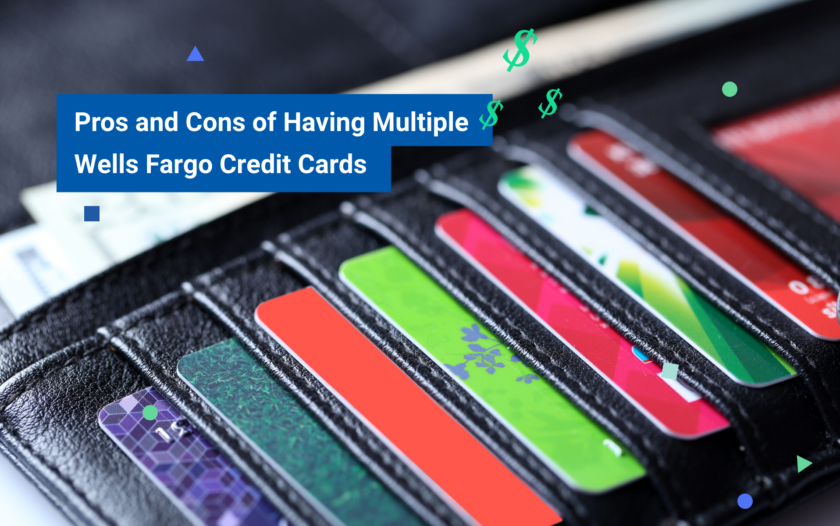Pros and Cons of Having Multiple Wells Fargo Credit Cards
About Trevor
Trevor Mahoney is a financial services writer and content creator based out of Los Angeles, California. He holds a Bachelors of Science in Finance from Santa Clara University. In his free time, he enjoys hiking and lounging on the beach.
Read full bio
At a Glance
Many individuals contemplate the pros and cons of multiple Wells Fargo cards. While having two credit cards offers potential benefits, such as diversified rewards, improved credit utilization, and enhanced relationship perks, there are also drawbacks like increased complexity and the risk of accumulating higher debt. Understanding these factors can help consumers make informed decisions about managing multiple Wells Fargo credit cards effectively.
In this article, you’ll learn:
Pros of having multiple Wells Fargo credit cards
Starting with the primary benefits a cardholder can enjoy by having multiple Wells Fargo cards in their wallet, the most notable pros include:
1. Diversification of rewards and benefits
One of the primary advantages of maintaining multiple Wells Fargo credit cards is the opportunity to diversify rewards and benefits. Each card may offer distinct perks such as cash back, travel rewards, or introductory bonuses, allowing cardholders to maximize benefits tailored to their spending habits and lifestyle preferences.
More: Wells Fargo Rewards
2. Credit Utilization and score impact
Another benefit lies in managing credit utilization effectively. By spreading expenses across multiple cards while keeping balances low relative to credit limits, cardholders can maintain a lower credit utilization ratio, positively impacting credit scores. This strategy demonstrates responsible credit usage and can improve financial standing over time.
3. Relationship benefits
Wells Fargo often provides relationship perks to customers with multiple accounts or products. Holding multiple credit cards with the bank could unlock additional benefits such as waived fees, higher reward rates, or dedicated customer service support. Consolidating banking relationships with Wells Fargo may enhance customer experience and streamline financial management.
4. Backup options and flexibility
Multiple Wells Fargo credit cards offer a safety net in emergencies or unexpected situations. With multiple lines of credit available, cardholders have backup options for making purchases or managing expenses during times of need. Additionally, different cards may come with varying features, providing flexibility in payment methods and benefits utilization.
Cons of having multiple Wells Fargo credit cards
Having multiple credit cards from one provider in your wallet isn’t all sunshine and roses, though, as there can be potential downsides that lead you to wonder it is good to have two credit cards or more. The most noteworthy of these include:
1. Complexity in management
Managing multiple credit cards can become complex, requiring diligent oversight of payment due dates, balances, and reward structures. Keeping track of various account details and ensuring timely payments can be challenging, potentially leading to missed payments, fees, or oversights in optimizing rewards.
2. Potential for higher debt
Increased access to credit through multiple cards raises the temptation to accumulate higher debt levels. With proper discipline and budgeting, individuals may find themselves spending their money wisely and carrying balances from month to month, resulting in accruing interest charges and financial strain.
3. Diminishing returns
While having multiple Wells Fargo credit cards offers diversification benefits, there is a point where additional cards may yield diminishing returns. The incremental benefits of each additional card may not justify the associated fees, effort, and potential risks. Individuals need to assess whether additional cards align with their financial goals and spending patterns.
Tips for using multiple Wells Fargo credit cards
For those who do choose to leap into owning multiple credit cards from Wells Fargo, consider the following tips as best practices for managing your debt:
- Set up automated payments or reminders to ensure timely bill payments across all cards.
- Regularly review account statements and monitor spending to avoid oversights or fraudulent activity.
- Maximize rewards by strategically using each card for purchases that offer the highest benefits.
- Consider consolidating credit lines or closing unused cards to simplify management and minimize potential risks.
FAQs
Multiple credit cards can offer diversified rewards, improved credit utilization, and enhanced flexibility. However, managing them responsibly is crucial to avoid overspending or accumulating excessive debt.
The optimal number of credit cards varies depending on individual financial circumstances and preferences. While some people successfully manage several cards, others may find it challenging to juggle multiple accounts effectively. Assessing one’s ability to manage credit responsibly and avoid overextending financially is essential.
Learn more: How Many Credit Cards Should I Have?
Holding multiple credit cards can impact credit scores both positively and negatively. On one hand, it can improve credit utilization ratios and demonstrate responsible credit management, potentially boosting scores. However, applying for multiple cards quickly or mismanaging them could lead to credit inquiries, higher debt levels, and missed payments, negatively affecting credit scores.
Learn more: Do More Credit Cards Help Your Credit Score?









